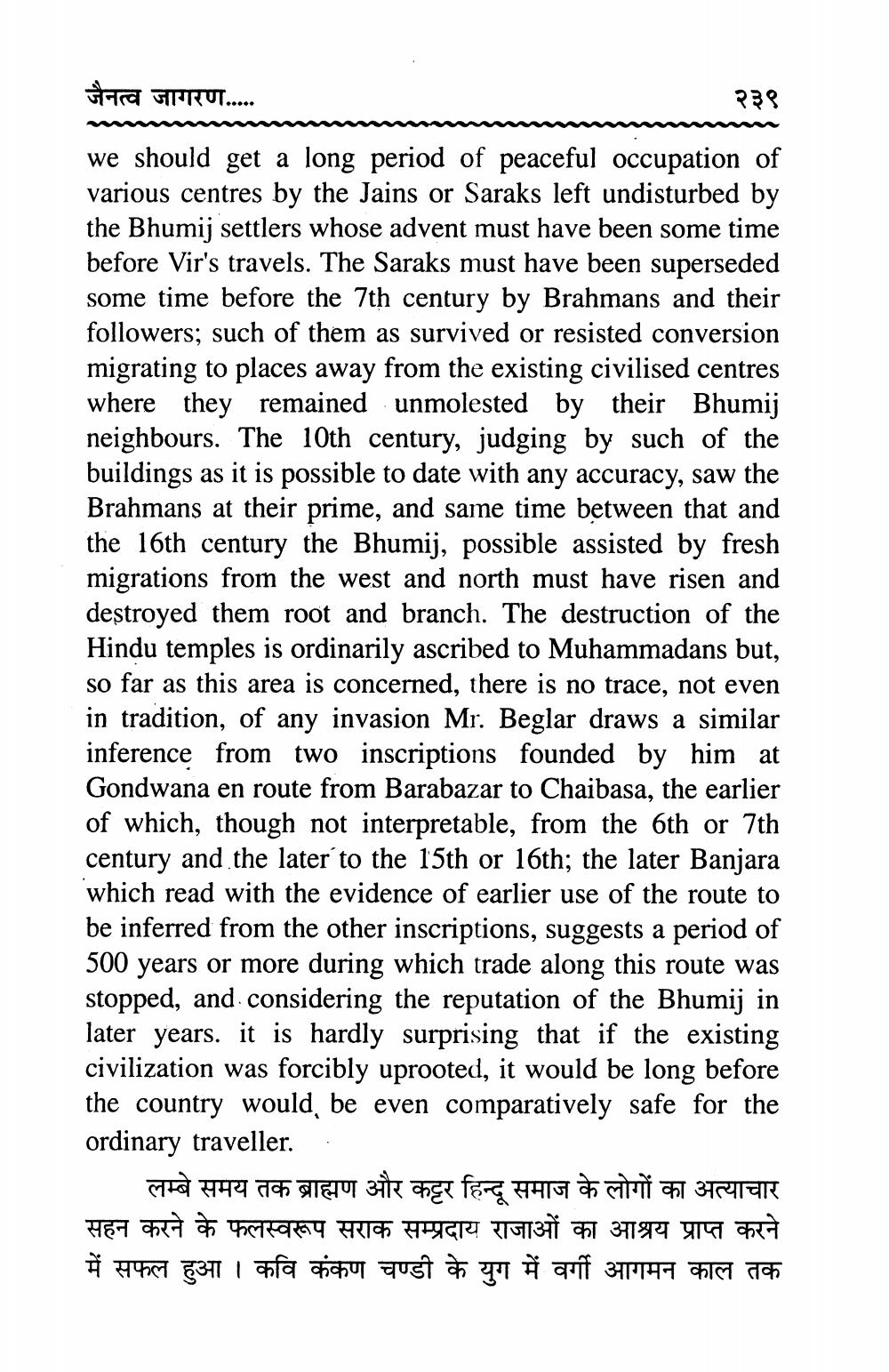________________
tra GIURUT.....
२३९
we should get a long period of peaceful occupation of various centres by the Jains or Saraks left undisturbed by the Bhumij settlers whose advent must have been some time before Vir's travels. The Saraks must have been superseded some time before the 7th century by Brahmans and their followers; such of them as survived or resisted conversion migrating to places away from the existing civilised centres where they remained unmolested by their Bhumij neighbours. The 10th century, judging by such of the buildings as it is possible to date with any accuracy, saw the Brahmans at their prime, and same time between that and the 16th century the Bhumij, possible assisted by fresh migrations from the west and north must have risen and destroyed them root and branch. The destruction of the Hindu temples is ordinarily ascribed to Muhammadans but, so far as this area is concerned, there is no trace, not even in tradition, of any invasion Mr. Beglar draws a similar inference from two inscriptions founded by him at Gondwana en route from Barabazar to Chaibasa, the earlier of which, though not interpretable, from the 6th or 7th century and the later to the 15th or 16th; the later Banjara which read with the evidence of earlier use of the route to be inferred from the other inscriptions, suggests a period of 500 years or more during which trade along this route was stopped, and considering the reputation of the Bhumij in later years. it is hardly surprising that if the existing civilization was forcibly uprooted, it would be long before the country would be even comparatively safe for the ordinary traveller.
लम्बे समय तक ब्राह्मण और कट्टर हिन्दू समाज के लोगों का अत्याचार सहन करने के फलस्वरूप सराक सम्प्रदाय राजाओं का आश्रय प्राप्त करने में सफल हुआ । कवि कंकण चण्डी के युग में वर्गी आगमन काल तक




